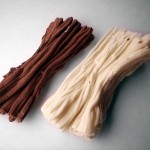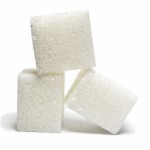HAPPY VALENTINE’S DAY from LC Foods! Valentine’s Day is a day to celebrate love, but for many it comes attached with material gifts. The most popular of these gifts is CHOCOLATE!
Think about the word CHOCOLATE for a minute. What comes to mind? For most of us, we associate chocolate with chcharacteristics such as SWEET or even UNHEALTHY.
In reality though, for 90% of chocolate’s long history, it was strictly a beverage, and SUGAR didn’t have anything to do with it.
It’s hard to pin down exactly when chocolate was born, but it’s clear that it was cherished from the start. For several centuries in pre-modern Latin America, cacao beans were considered valuable enough to use as currency. Both the Mayans and Aztecs believed the cacao bean had magical, or even divine, properties.
Sweetened chocolate didn’t appear until Europeans discovered the Americas and sampled the native cuisine. Chocolate didn’t suit the foreigners’ tastebuds at first –one described it in his writings as “a bitter drink for pigs” – but once mixed with honey or cane sugar, it quickly became popular throughout Spain.
By the 17th century, chocolate was a fashionable drink throughout Europe, believed to have nutritious, medicinal and even aphrodisiac properties. But it remained largely a privilege of the rich until the invention of the steam engine made mass production possible in the late 1700s.
In 1828, a Dutch chemist found a way to make powdered chocolate by removing about half the natural fat (cacao butter) from chocolate liquor, pulverizing what remained and treating the mixture with alkaline salts to cut the bitter taste. His product became known as “Dutch cocoa,” and it soon led to the creation of solid chocolate.
The creation of the first modern chocolate bar is credited to Joseph Fry, who in 1847 discovered that he could make a moldable chocolate paste by adding melted cacao butter back into Dutch cocoa.
In America, chocolate was so valued during the Revolutionary War that it was included in soldiers’ rations and used in lieu of wages. While most of us probably wouldn’t settle for a chocolate paycheck these days, statistics show that the humble cacao bean is still a powerful economic force!
Today, in the low carb and sugar-free world, alcohol sugars – namely MALTITOL – rule the sugar free candy products…until now!
Our chocolate treats at LC-Foods are made without maltitol for you to enjoy. There’s something for every chocolate lover!
So give the gift of chocolate this Valentine’s Day and stay within your diabetic, low carb, sugar free and/or gluten free diets!
F U N F A C T…
The Top 15 Chocolate Consuming Nations
1. Switzerland 10. France
2. Ireland 11. Poland
3. United Kingdom 12. Russia
4. Austria 13. Australia
5. Belgium 14. Sweden
6. Germany 15. U.S.A
7. Norway
8. Denmark
9. Canada
Source from Above: Benson, Amanda (2008). A Brief History of Chocolate. Uncover The Bittersweet Story of This Ancient Treat. Retrieved from http://www.smithsonianmag.com/arts-culture/a-brief-history-of-chocolate-21860917/?page=1


